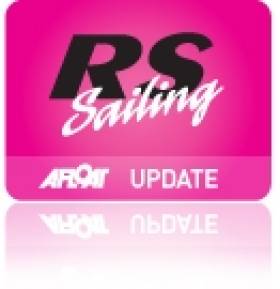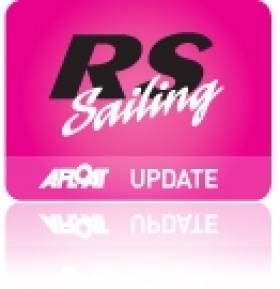Displaying items by tag: 200
RS Sailors Tested at Greystones Eastern Championships
#rssailing – The first event of the season proved to be a testing one for all. After the first days squally conditions which saw the Fevas getting in only one race the Sunday dawned relatively benign.
Overall results are available to download below.
All launched around 10.30 and racing got underway with a full compliment of sailors on the water. Two races were finished in near perfect conditions with a lovely force 3-4.
The third race swiftly descended into the survival conditions which we had seen on the Saturday and it became increasingly obvious that there were more hulls than sails to be seen throughout the three fleets.
Most pairings however came ashore with broad smiles whether they had finished the race or not delighted with the fun and the blasting reaches which more often than not had ended with a swim.
Top Feva pairing of Alison Dolan and Grainne Young from BISC/NYC added to their first of Saturday with an 8th and another two firsts leaving them clear leaders.
Behind them the fleet was very tightly bunched with only a point separating the next three Emer Rafferty/Laura Coleman RSGYC , Alice Brennan/Isobel O'Grady GSC, and Triona Hinkson/Helen O'Beirne RSGYC.
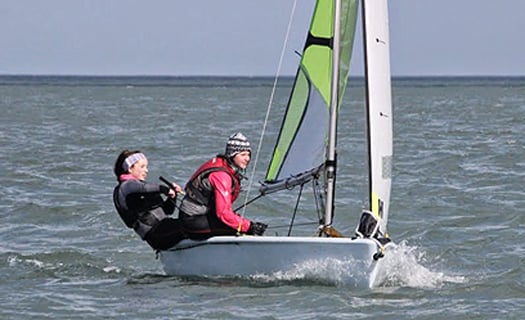
Feva girls Alison Dolan and Grainne Young
In the RS200s it was old time pairing of Marshall King and Heather King who took the honours with Frank O'Rourke and son Kevin in second. Third and first junior was Stephen Craig and Conor Foley. First lady prize went to Lisa Smith ably crewed by Megan Hayes.
Newcomer to the fleet and ex Enterprise and Laser sailor Chris Arrowsmith was there with his son Greg mixing it up a bit on the Sunday to make it an interesting day.
The 400s with a great showing of 26 boats were won by a single point by local boys Sean Cleary and Steve Tyner proving that consistency pays, counting three seconds a third and a fourth. Just behind them was Alex Barry with George Kenefick form MBSC/RCYC and Bob Espey/Michael Gunning BYC, again with only 3 points to separate them. Local men Simon Herriott/Sprinkles Moran were just behind in 4th

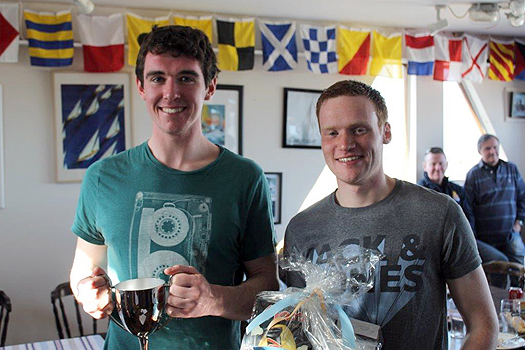
Greystones pairing Sean Cleary and Steve Tyner were RS400 winners
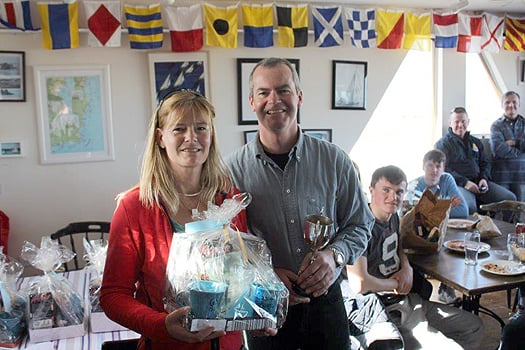
Counting five wins Heather and Marshall King walked away with the RS200 prizes
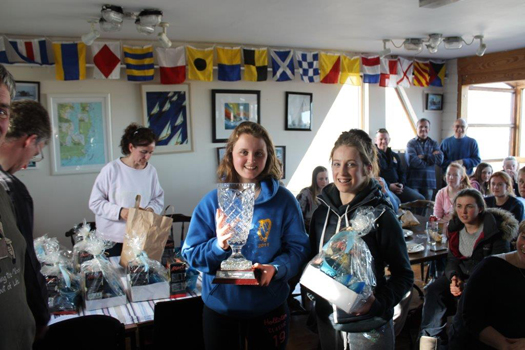
Three wins gave Feva girls Alison Dolan and Grainne Young the overall win
All in all it was an extremely successful event especially so early in the season and all thanks goes to Greystones Sailing Club for pulling out all the stops to make it happen. Thanks goes also to long suffering PRO Neil Murphy who had to contend with extremely shifty and squally conditions throughout the two days, and still managed to pull off a full series of 6 races place sealing a great weekend for the local fleet.

Greystones Lead Both Fleets in RS 200/400 Irish Nationals
The championships, which were sponsored by Neil Mathews Architects, saw 18 RS400 boats and 13 RS200s enter. There were five races held over Friday and Saturday, while gusts of nearly 40 knots saw Sunday's races abandoned.
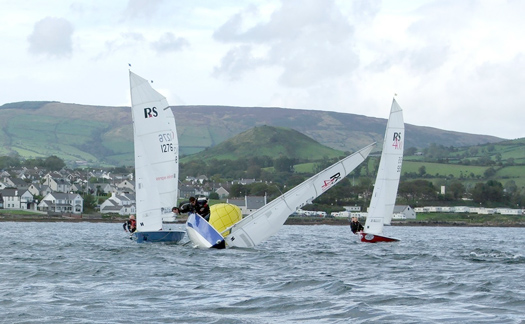
Local sailors John Lowry and Neil Diamond attempt to right their capsized RS400, while Greystones' Fiachra Etchingham and Eoghan Simpson pass the mark at the RS200/400 National Sailing Championships in Cushendall at the weekend
Roy Van Maanen and Glen Reid from Greystones Sailing Club led the RS200 fleet, bagging three firsts, a second and a third. In second place were Trevor Fisher and Heather King from Royal St George Yacht Club in East Down. And then it was Greystones again, with Sean Cleary and Steven Tyner amassing a first, second, third and two fourth place finishes to end up in third place overall.
Paul McLaughlin and Mick McKinley were first home from the five local crews that took part in the RS400 class, finishing fifth overall.
Gerry and Avril Cannon lifted a prize as the first mixed crew home in the 400s, while Sarah and Ciara Byrne in an RS200 were the first all-woman crew home.
Richard Doig and Dr Michael Hill from East Antrim Boat Club kindly officiated as Race Officer and Assistant Race Officer for the series.


























